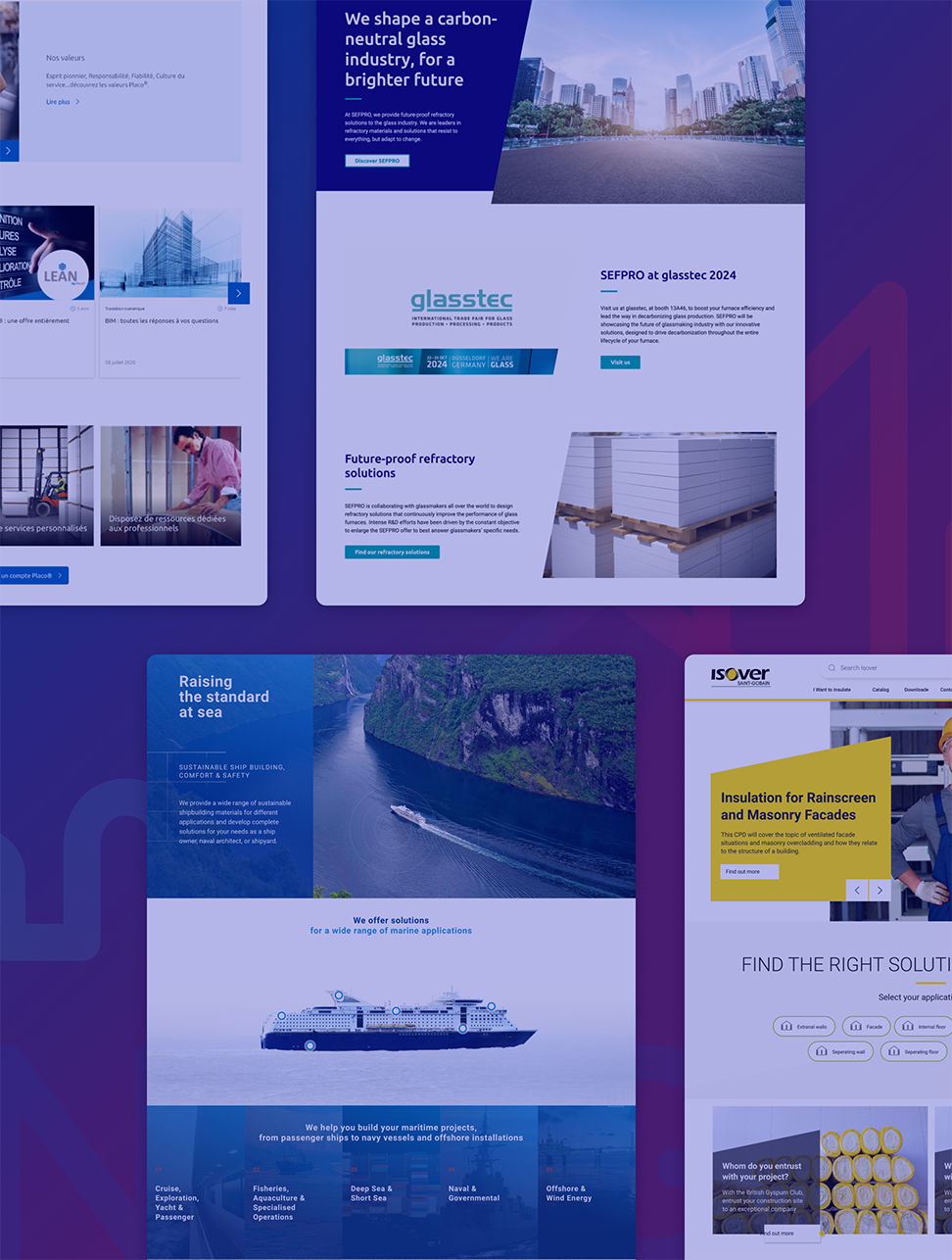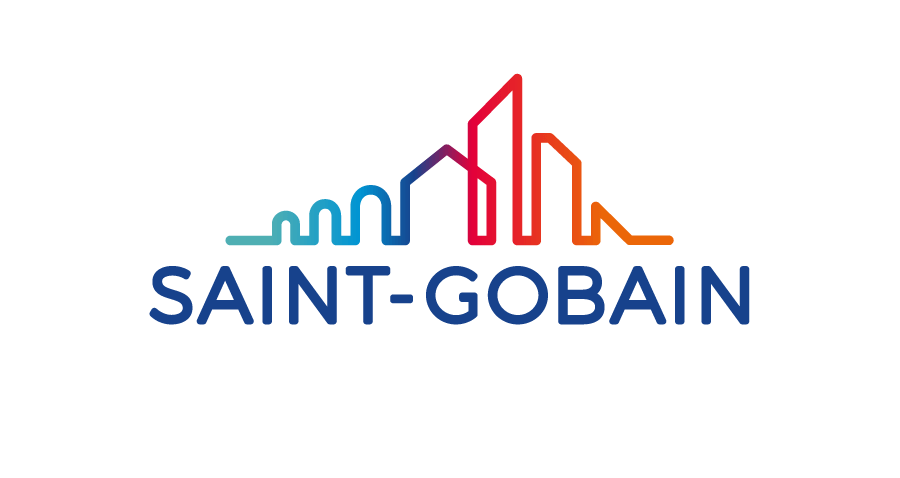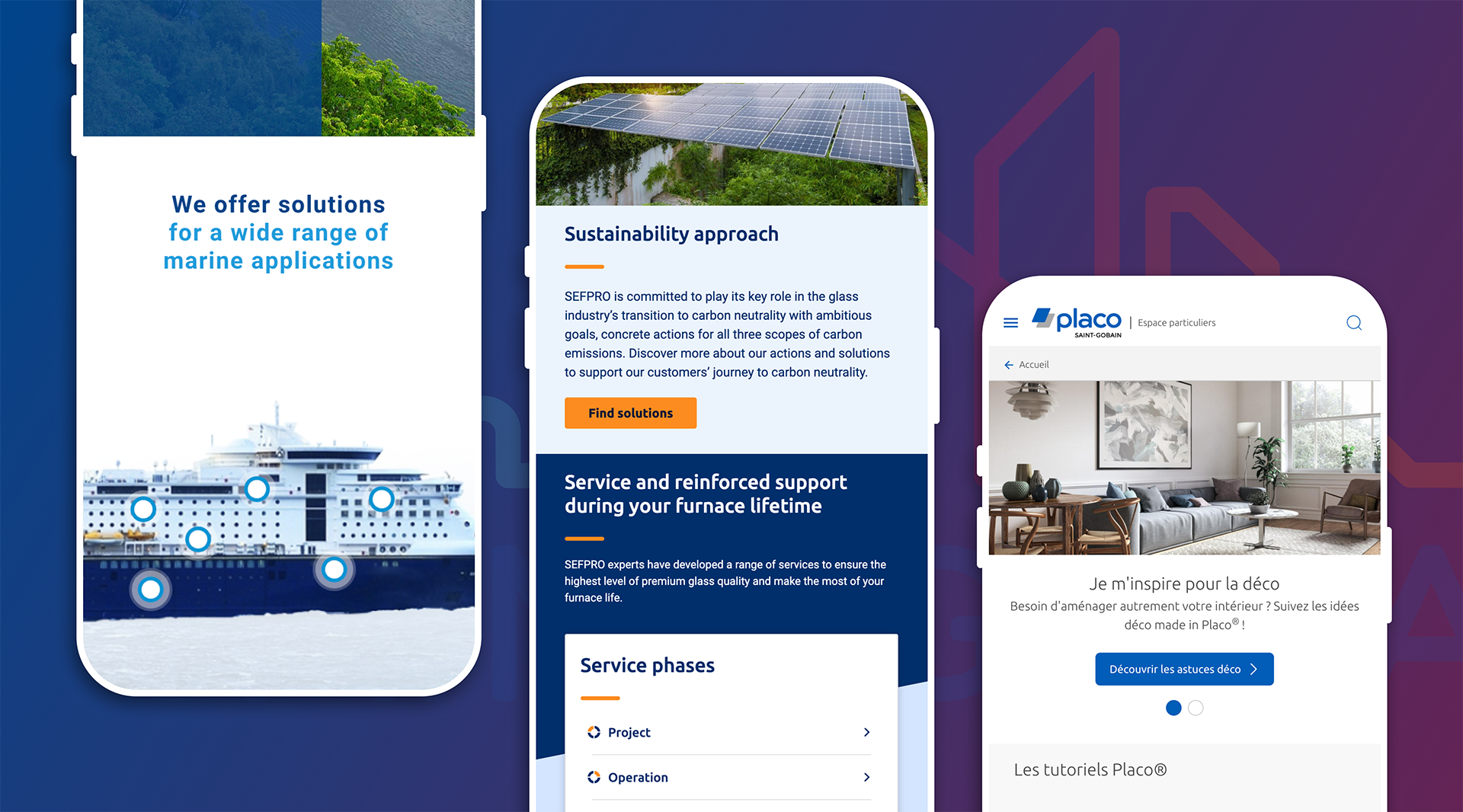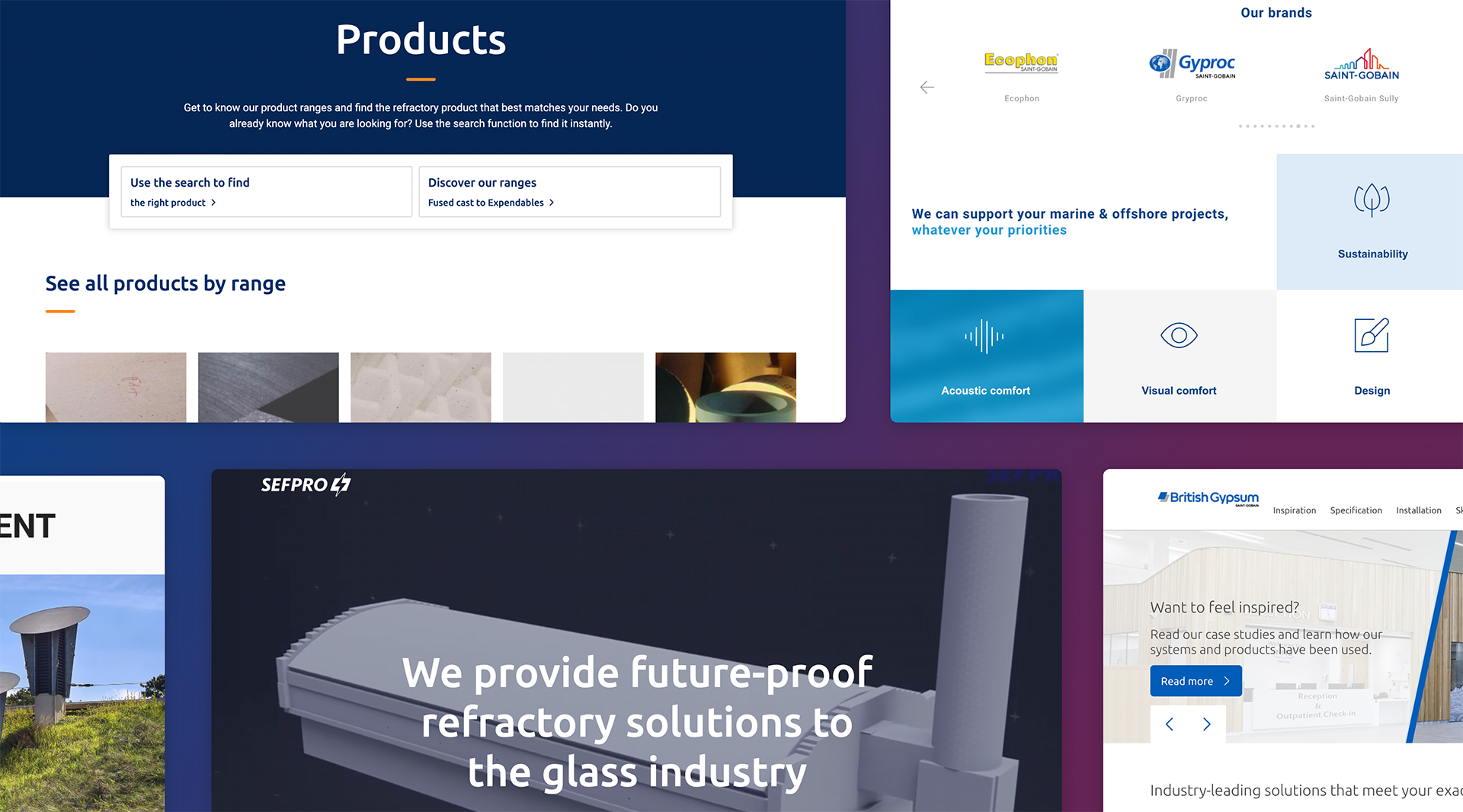JAKALA merges multiple legacy platforms and creates a unified multi-brand ecosystem for Saint-Gobain
Published on 07 October 2024


Multinational corporation Saint-Gobain is one of the world's leading suppliers of building materials and systems, present in 70 countries, and employing more than 167,000 people.
Utilising JAKALA (formerly FFW), Saint-Gobain wanted to streamline and modernise its digital presence, merging multiple legacy platforms in a unified multi-brand ecosystem that reduced maintenance complexity and ensured consistency.
Overall, JAKALA helped Saint-Gobain to enhance efficiency, reduce costs, and provide flexibility for its various business units while ensuring a unified, user-centric digital experience.
At a glance
held on the platform, and counting!
utilise the platform
increase in speed to launch new websites with PIM integration
Context & Challenges
One of the biggest challenges was renewing 160+ international websites, each with their own expectations and specificities, for Saint-Gobain’s construction brands.
JAKALA (formerly FFW) had to create a platform able to handle a multi-brand and multi-site approach, with a primary focus on creating economies of scale and total flexibility in reusing developed website modules and site features.
The team also faced numerous significant business and technology hurdles:
- Diverse UX/UI creation: Saint-Gobain needed to provide unique user experiences for each business unit, so the team had to craft distinct designs that were aligned with varying stakeholder demands.
- Legacy platform analysis: Analysing and migrating from multiple legacy platforms, including Drupal 7, Sitecore, and a bespoke CMS. This was complex, particularly when some legacy features lacked precise specifications and necessitated reverse-engineering efforts to ensure continued functionality.
- Stakeholder management: Handling multiple external and internal stakeholders added complexity to project coordination, communication, and decision-making processes.
- Third-party integrations: Saint-Gobain needed to integrate third-party systems such as PIM, CRM, and marketing automation systems, requiring meticulous planning and execution to ensure seamless functionality.
- PIM integration complexity: Integrating product information management (PIM) systems posed a critical challenge due to the diversity of products and solutions for different brands across websites. This led to three PIM systems managing 32 different data models.
- Drupal 7 migration: The company needed to build a new platform and migrate roughly 100 websites to Drupal 10 from Drupal 7 before its end of life, ensuring data integrity and compliance.
- Governance and efficiency: Saint-Gobain wanted to establish a governance model that allowed it to share functionalities across business units, achieving faster time to market and reducing the total cost of ownership.
- Feature customisation: The company wanted to create a web platform that offered business units a variety of features — and autonomy over their sites’ UX/UI and content — providing customisation options that allowed units to tailor sites to their specific needs while maintaining a core platform.
- Change management during a Drupal migration project proved to be a formidable challenge, requiring careful planning and strategic implementation to navigate effectively.

Our approach and solution
The project resulted in notable achievements, such as accommodating over 160 websites on the platform (and counting!), implementing a multi-vendor system for efficient feature sharing across brands, and hosting eight brands with room for further growth. Additionally, it led to a significant decrease in time to market and a notable reduction in the total cost of ownership, enhancing cost efficiency within the digital ecosystem.
JAKALA (formerly FFW) created the platform to be used in executing the company’s multi-brand strategy. The platform is used as the main driver in a larger Saint-Gobain revamp strategy. The flexible platform setup has extended to other sectors and now covers more than just the building sector.
The multi-brand website platform has allowed Saint-Gobain to create new digital user journeys by implementing clear synergies between multi brands on the same website. This will enable Saint-Gobain to serve its target groups with solutions responding to their needs.
The project achieved significant outcomes, including:
- 160+ websites: The platform successfully accommodates over 160 websites.
- Multi-vendor flexibility: A multi-vendor platform enables efficient feature reuse across various brands and websites.
- 8+ brands: Currently, eight brands utilise the platform, with potential for further expansion.
- Time to market reduction: The project led to a substantial reduction in time to market.
- Total cost of ownership (TCO) reduction: The TCO was significantly lowered, enhancing cost efficiency across the digital ecosystem.
Overall, Saint-Gobain utilised the following JAKALA services:
- Audits & technical consultancy
- Business and technical discovery
- UX & UI design
- Data and analytics
- SEO and performance optimisation
- Web development
- 25+ third party integrations
- Security and compliance
- Multi-brand platform
- Enterprise platform integration
- Continuous development and evolutions
Technologies
Drupal 10, Acquia Cloud, Razuna DAM, Riversand PIM, Drupal Layout Builder, Salesforce, Marketo, Acquia Search, Algolia.

Results
-
01
Total cost of ownership (TCO) reduction
The TCO was significantly lowered, enhancing cost efficiency across the digital ecosystem.
-
02
Nearly doubled website support capabilities
WDS went from supporting 58 websites per staff member to supporting 110.
-
03
Consolidated website platforms
Decommissioned three Drupal 7 platforms into one Drupal 9 platform.




